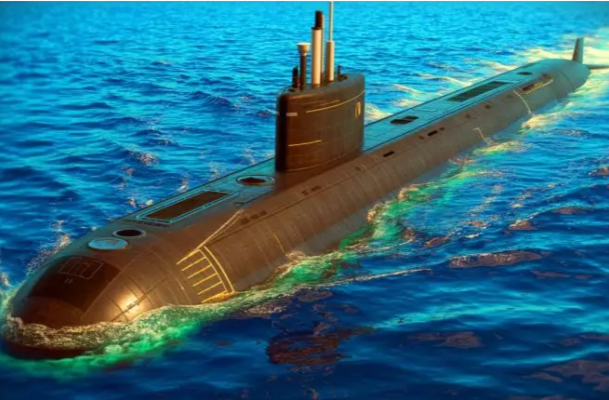Discover how the Royal Navy’s Astute-class submarines, true technological marvels, are redefining stealth and power at sea.
The launch of the first Royal Navy Astute-class submarine in 2007 marked a major turning point in nuclear submarine development. Equipped with cutting-edge technology, this submarine is considered a model of stealth—often compared to a dolphin for its discretion. As the first nuclear submarine launched in nearly a decade, it symbolizes a significant advancement in underwater engineering, with construction methods even more complex than those used for the American space shuttle. This article explores the features and innovations that make the Astute-class a cornerstone of British naval defense.
Advanced Nuclear Propulsion Technology
The Astute-class submarine is powered by a nuclear reactor, granting it virtually unlimited range. Thanks to this system, it can circumnavigate the globe without surfacing, a substantial strategic asset. This ability to remain submerged for months offers clear advantages in terms of stealth and safety. Additionally, this technology allows the submarine to reach high speeds while maintaining minimal noise—a critical factor in evading enemy sonar systems.
Nuclear propulsion also frees up space onboard for additional equipment and weaponry. The submarine can carry a full arsenal, including Spearfish heavy torpedoes and Tomahawk cruise missiles. These weapons enable it to engage targets both at sea and on land, while also providing defensive cover for the Royal Navy’s Dreadnought-class ballistic missile submarines.
Stealth Design Innovations
Astute-class submarines stand out for their innovative stealth design. One of the key features is the use of anechoic tiles, which absorb sonar waves and significantly reduce the vessel’s acoustic signature. Unlike earlier models, these tiles are integrated directly into the hull’s design rather than being added post-construction. This integration allows for optimal sonar echo reduction, making the submarine exceptionally hard to detect.
The tiles are strategically placed across various parts of the hull, sometimes in multiple layers to maximize wave absorption. Moreover, the hull’s structure is designed with specific angles to deflect sonar reflections. This level of sophistication reflects the Royal Navy’s commitment to maintaining technological superiority in undersea warfare.
Quieter Propulsion Systems
Beyond stealth improvements, the Astute-class features extremely quiet propulsion systems. The adoption of next-generation turbo-electric drives is a major innovation. In this setup, the nuclear reactor generates electricity, which then powers an electric motor for propulsion. This method is much quieter than systems where the reactor is directly linked to the propeller shaft.
While this type of propulsion has been used in other submarine classes, such as the U.S. Navy’s Columbia-class, its application in the Astute-class underscores a deliberate effort to minimize noise—a key factor for evading enemy passive sonar sensors. It further supports the view that the Astute-class represents a significant leap forward in British submarine warfare capabilities.
A Model for the Future SSN-AUKUS Program
The Astute-class is not only a masterpiece of submarine engineering—it also serves as the foundation for the future SSN-AUKUS attack submarine program. According to BAE Systems, these new submarines will be the largest, most powerful, and most advanced ever operated by the Royal Navy. They will gradually replace the Astute-class while incorporating even more advanced technologies.
The success of the Astute-class is a testament to the ingenuity of its design and its ability to operate effectively in modern naval warfare environments. The ongoing development of these submarines highlights the critical importance of innovation in defense, where stealth and operational efficiency are paramount. The key question is how these technological advances will shape future developments in undersea warfare.
As the Astute-class continues to serve as a cornerstone of the Royal Navy’s fleet, it raises crucial questions for the future of maritime defense: How will these innovations influence upcoming naval warfare strategies? Will other naval powers be able to catch up with this level of technological advancement?
Source: hellobiz


